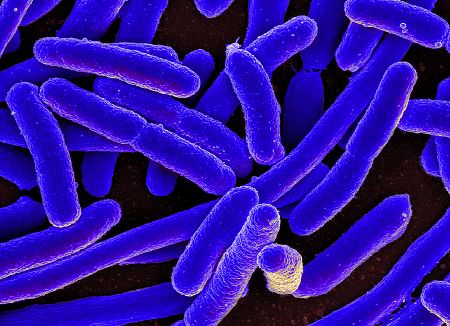You know those nasty times when your body is invaded by a virus or by bacteria and you need to take antibiotics to feel better? Wait. Which one do you take antibiotics for? Which of these two causes infections, and which causes the common cold? You still don’t know the difference between them? Then you really need to keep reading and find out what is the difference between viruses and bacteria.
Summary Table
| Virus | Bacteria |
| Uncertain whether it is a living or a non-living organism | Living organism |
| Acellular: made out of a nucleus surrounded by a protein membrane | Is a single-celled microorganism |
| Is 20-400 nanometers in size | Can be 1000 nanometers in size |
| Cannot live on its own; it needs a living host | Can live on its own; can live in normal and harsh environments as well as in a host |
| Develops harmful parasitic relations | Develops harmful parasitic relations as well as beneficial symbiotic relations with hosts |
| Causes viral infections | Causes bacterial infections |
| Some cannot be cured (AIDS, common cold); others highly depend on how strong the immune system is; vaccines and prevention are the best protection against viral infections | Are treated with antibiotics; taking the right type of antibiotic is important for the future reactions of the body to similar infections |
| Viral infections are easily transmitted from person to person, by coming in direct contact through sex and kissing (liquid environments), or by coming in contact with a contaminated surface; airborne infections are very dangerous | Bacterial infections are easily transmitted from person to person, by coming in direct contact through sex and kissing (liquid environments), or by coming in contact with a contaminated surface |
Descriptions

A virus is a microorganism that cannot live on its own and needs a host to survive. Once inside a host, it causes illnesses. The resulting symptoms can cause an immune response in the body. Viruses come in a very wide variety of shapes and sizes, with diameters between 20 and 400 nanometers.
Viruses are acellular, meaning that they have no cell structure. They consist of nucleic acid (DNA or RNA) surrounded by a protective protein coat called a capsid. Opinions on whether or not viruses are living organisms differ.
Viruses cause systemic infections that affect the whole body. Some viruses are more dangerous than others – some cause the common cold, while others cause AIDS or hepatitis. Many viral infections can be prevented by vaccinations. Vaccines introduce inactive viruses to the organism to trigger an immune response. With the right antibodies produced by white blood cells, the body is protected against infection. Also, if your body has fought off one particular disease caused by a virus, you will remain immune to that disease. Some diseases commonly contracted in childhood – measles, chicken pox, etc. – are good examples in this respect.

A bacterium is a single-celled living microorganism, usually a few micrometers long in the shape of rods, spheres or spirals. They were among the first forms of life on Earth. Different species can survive in soil, water, in acidic hot springs and in radioactive waste. They have symbiotic or parasitic relationships with their hosts; they can either be beneficial or harmful. For example, at any given moment, a human has bacterial flora on their skin and in their intestines (where they play an active role in digestion).
Other types of harmful bacteria can cause diseases such as tuberculosis, syphilis, cholera, bubonic plague and urinary infections. Antibiotics are used to fight off the effects of bacteria. Special care must be taken in the case of antibiotics, as abuse of these drugs can make the bacteria resistant to them, making it more and more difficult to get rid of future infections.
Virus vs Bacteria
So what is the difference between virus and bacteria?
A virus is acellular and is not necessarily considered a living organism. A bacterium has one cell and is considered a living organism. The next difference is in size. Bacteria can be 1000 nanometers long, whereas viruses can be 20-400 nanometers long. Viruses can infect bacteria as well.
Viruses have no cells and only a nucleus surrounded by a protein membrane, which it uses to attach to a host. It cannot live on its own, only in a parasitic relationship. Bacteria, on the other hand, can live on their own in other environments, not only in a human or animal host.
While both viruses and bacteria are usually harmful and trigger a response from the body’s immune system, good bacteria exist as well. When fighting viruses, vaccines are usually the best option; the weakened or dead virus in the body triggers the production of antibodies. This will protect the body from any potential infection from the real virus, even for life. In the absence of a vaccine and in case of an infection, it is up to the body to fight the virus.
Antibiotics help people recover from bacterial illnesses. There are different types of antibiotics for different types of bacteria. It is always best to know the type of bacteria causing an infection to know what type of antibiotic to take. Going for a stronger pill can get things done and fast, but it also means possibly making the bacteria stronger and building their resistance to the strong antibiotic.
Hygiene is important to avoid both viral and bacterial infections. Direct contact with an infected person or with their bodily fluids, such as through sex or kissing, are common ways for viruses as well as bacteria to spread. Contaminated surfaces, food and water can also make a person sick.





